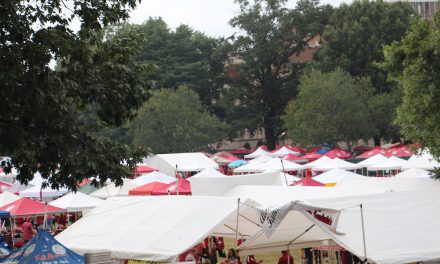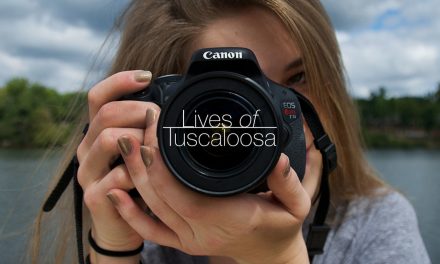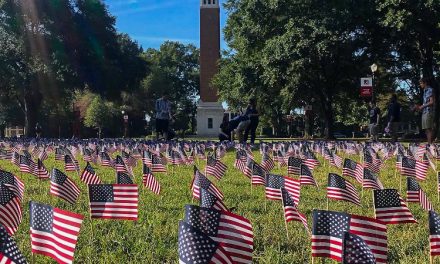STORIES & IDENTITIES
From the desk of Anne Franklin Lamar, Ph.D., faculty UA Honors College
Who are you?
What is your story?
We are continuously called to answer these questions,
and we often edit and revise our answers to fit the
moment at hand, the audience before us, and the life
we’ve lived. Social reformer and abolitionist Frederick
Douglass wrote three personal narratives over the course
of his adult life, each a different take on the answer
to these questions and each a gripping and horrific
testimony to the life of a formerly enslaved person.
In the first of these three, Douglass writes himself
into existence first and foremost as a native-born son
of America. He writes, “I was born in Tuckahoe, near
Hillsborough, and about twelve miles from Easton, in
Talbot County, Maryland.” This simple statement of
geographical origin claimed what should have been
Douglass’ birthright and called forth the hypocrisy of
slavery and the founding principles of America. His
answer meant much more than the location of his birth.
For Honors students at UA, reading the narratives
of formerly enslaved people and other marginalized
Americans gives a more complex and necessary shape to
how they think about familiar and fraught concepts like
the American Dream, and these stories inform much more
than their academic pursuits.
I challenge my students to discover and study
unfamiliar narratives and ask new and difficult questions
of familiar narratives. We also ask these questions of each
other and our communities and weave together narratives
that give our lives texture. These narratives have the
power to change how we see the world and our role in
it, and in an Honors interdisciplinary seminar, we are
working together to create a space for questions, critical
thought, and creativity that continue you on far past the
classroom.
The first semester I taught in the Honors College, I
was finishing my dissertation and deeply immersed
in a diary written over 150 years ago. I knew I wanted
to connect students to the texts that women create in
their daily lives, but I wasn’t sure how the depths of my
graduate work would translate to an interdisciplinary
undergraduate course. So, instead of beginning our
class with diaries, I reached back to some of my earliest
memories of women creating and started with quilts.
These tactile, utilitarian works of art tell the story of
effort, care, and creativity. Theirs is a visual narrative.
In my women’s text class, we study the stories women
tell about their own identities and communities through
everyday art. Whether it is a quilt, a cookbook, or a diary,
these texts help us recover and understand the stories of
women and their everyday lives, and these stories teach us
about our own lives and creative pursuits.
We answer origin questions so frequently in our lives
that it is not often that we stop and reflect on how the
stories we hear and tell others shape how we see ourselves
and the world around us, but the power of diving deeply
into narratives is that a good story challenges us to stop
and think and see the world anew even in the slightest
way. That change in perspective or nagging question
creates an ethic by which to live and call— to listen
attentively and see each person’s story as a unique and
valuable part of the whole.
No matter the topic, I root each of my classes in the
belief that stories have the power to change how we see
the world and ourselves. Stories humanize the world
around us because we are called to empathy. Oral histories
affirm the everyday person’s story and broaden our
concepts of history.
Identity narratives resonate with college students
because college is a time when students challenge,
create, and explore their answers to these foundational
questions. Being immersed in others’ stories of
identity helps students learn to practice empathy, to be
vulnerable, and to embrace critically creative thinking in
an academic setting.






